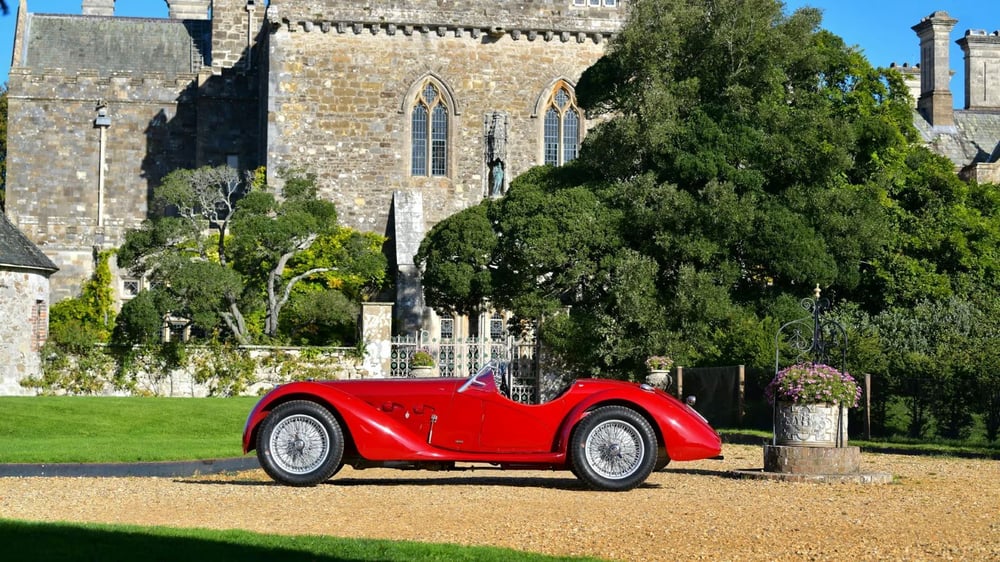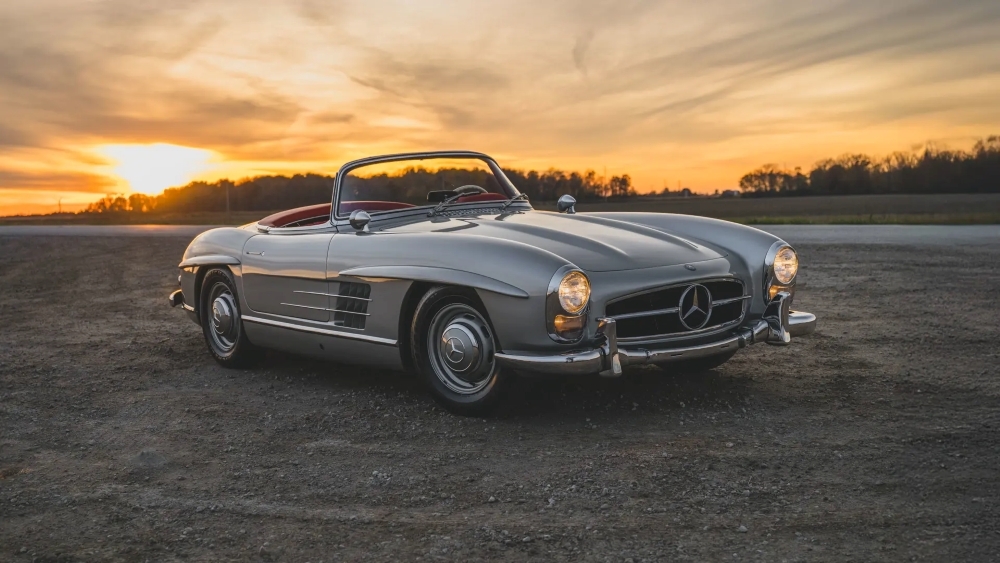Engineering Icons: Two Remarkable Cars at the RM Sotheby’s London Sale
For nearly two decades, RM Sotheby’s has held its place as the leading automotive auction in London, and indeed across the United Kingdom. Every year, it brings together some of the world’s rarest and most valuable classic cars, becoming a key event on the capital’s calendar. In 2024, the auction moved to a prestigious new home at The Peninsula London, which had just opened its doors that summer. With its elegant setting, exceptional hospitality, and world-class collection of cars, the event reached a new level of excellence.
This year, RM Sotheby’s returns once again to The Peninsula as part of London Motor Week, taking place from 27 October to 2 November. The sale will also lead into the famous London to Brighton Veteran Car Run, a historic motoring tradition that will celebrate the 129th anniversary of the 1896 Emancipation Run in 2025. Organised by the Royal Automobile Club since 1930, it remains one of the world’s most beloved automotive events, and RM Sotheby’s is proud to serve as its title sponsor.
In anticipation of the upcoming auction, we look at two extraordinary cars from very different eras. Both represent the height of innovation and design in their time, produced in extremely limited numbers and standing today as true masterpieces of engineering.
1937 Alfa Romeo 8C 2900 B Spider – in the Style of Zagato

During the 1930s, global competition on the racetrack was intense. While Germany’s famous Silver Arrows dominated through sheer technological advancement, few of those innovations ever reached the road. Alfa Romeo, however, achieved something rare: a perfect balance between race-winning performance and everyday usability.
The Alfa Romeo 8C 2900 was the finest example of this philosophy. Its advanced chassis featured independent suspension, lightweight construction, and powerful drum brakes, all designed with racing principles in mind. The car’s eight-cylinder engine, a twin-supercharged 2,905 cc unit derived from the legendary 1934 P3 Tipo B, was a technical marvel and a symbol of Italian engineering excellence.
Only 38 units of the 8C 2900 were ever built, and just a few remain in existence today. Among the most desirable were the ‘Long Spiders’, slightly lengthened by 20 centimetres to create a more comfortable two-seat layout while preserving the car’s racing spirit.
Chassis number 412011 was completed in 1937 and first owned by German industrialist Ernst Carstens, who commissioned a local builder to craft a custom Cabriolet body. Its history during the war years is uncertain, but records indicate the car stayed with the Carstens family until the mid-1950s. After several ownership changes, it underwent partial restoration in 1969, though the original engine - replaced earlier in its life - could not be recovered.
In the 1980s, the car was purchased by noted Alfa Romeo expert David Black, who began a full restoration. Believing it to have originally been a shorter, sportier model later converted into a Cabriolet, he set out to return it to that imagined form. Although he passed away before completion, his family continued the project, and the restoration was finally finished almost twenty years later.
The car retains many original components, and its engine was completely rebuilt in July 2025. The original Cabriolet body also accompanies the vehicle, allowing future owners to display it either in its elegant touring form or its sportier guise.
With more than forty years of single-family ownership and remarkable preservation, this car represents a rare and important chapter in Alfa Romeo history. Embodying craftsmanship, innovation, and enduring beauty, this vehicle is the very essence of pre-war automotive artistry.
2024 Aston Martin Valkyrie Coupe

In the early 2010s, world-renowned Formula 1 designer Adrian Newey joined forces with Red Bull Racing and Aston Martin to create a hypercar unlike any before it, with the aim of bringing Formula One technology to the road. The project, first known as Nebula, evolved into what is now the Aston Martin Valkyrie.
Named after the mythical Norse warriors who rode winged horses into battle, the Valkyrie lives up to its name in every sense. Built almost entirely from carbon fibre, with not a single steel component, the car’s structure is ultra-light yet incredibly strong. Its naturally aspirated 6.5-litre V12 engine produces an astonishing 1,160 horsepower, while its aerodynamic design allows race-level performance without compromising the car’s graceful shape. Even its brake lights are a feat of engineering as the smallest ever fitted to a production vehicle, and the hydraulic system incorporates technology used in Apache helicopters.
The car presented at auction is one of only 25 right-hand drive examples from a total of 150 road-legal Valkyries. This particular model, named Anemos (meaning “wind” in Greek) is one of the most highly customised Valkyries ever built. Its design blends performance with artistry: purple-tinted exposed carbon fibre and matching Alcantara upholstery are complemented by 24-carat gold leaf detailing throughout, including the steering wheel, engine start button, and body accents. Even the Aston Martin and Anemos logos are finished in gold, with matching embroidery on the seats and honeycomb-pattern wheels.
Completed in early 2024 and registered that March, Anemos has covered just 112 miles. Presented in pristine condition, it is a masterpiece of modern craftsmanship and a showcase of the passion, precision, and personalisation that define the new age of automotive excellence.



.jpg)